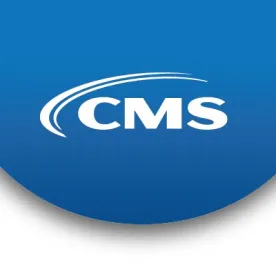On November 9, 2021, pursuant to the Consolidated Appropriations Act of 2021, the Centers for Medicare and Medicaid Services (“CMS”) issued a Final Rule establishing new survey and enforcement regulations for Medicare-certified hospice programs. The spotlight on hospice survey enforcement comes as no surprise given reports issued in recent years by the Department of Health and Human Services’ Office of Inspector General (“OIG”) highlighting quality of care issues among Medicare-certified hospices. According to CMS, the purpose of these new regulations is to increase and improve transparency, oversight, and enforcement of hospice programs and to ensure that survey processes are effective in driving quality of care hospice programs. The following is a summary of the new regulations:
Survey Process
-
The new regulations codify the already existing requirement that each Medicare-certified hospice be surveyed at least once every 36 months. Surveys may also be conducted as frequently as necessary to assure the delivery of quality hospice program services and to confirm that the hospice program has corrected previously cited deficiencies. In addition, surveys must also be conducted when complaints against the hospice program are reported to CMS or the state survey agency.
-
All hospice surveyors must meet minimum qualifications, undergo CMS training, and disclose actual or perceived conflicts of interest. Conflicts of interest can include circumstances where the surveyor served as an employee or consultant to the hospice being surveyed within the prior two years; has, or has a family member with, financial interest or ownership in the hospice program to be surveyed; or has an immediate family member who is a patient of the hospice to be surveyed.
-
Surveys must be conducted by at least one registered nurse, and survey teams that are comprised of more than one surveyor must be multidisciplinary and involve professionals typically involved in hospice care.
-
Effective December 27, 2022, the state survey agency must maintain a toll-free hotline to collect, maintain, and continually update information on Medicare-participating hospice programs and to receive complaints and answer questions about hospice programs. State agencies are also required to maintain a unit for investigating any complaints.
Enforcement Remedies
Currently, the only remedy that CMS can impose upon hospice providers that are noncompliant with the Medicare conditions of participation is termination. Effective January 1, 2022, these new regulations will allow CMS to impose a range of enforcement penalties for each condition-level deficiency identified during the survey, similar to CMS’s enforcement authority with respect to skilled nursing facilities and home health care agencies. Regardless of the enforcement remedy, and even if no CMS enforcement remedy is imposed, hospices must still submit a plan of correction for each deficiency cited.
-
Selection of the Remedy: CMS will consider the following factors when choosing the appropriate enforcement remedy: (1) the extent to which the deficiency poses immediate jeopardy to patient health and safety; (2) the nature, incidence, manner, degree, and duration of the deficiencies or noncompliance; (3) the presence of repeat deficiencies, the hospice program’s overall compliance history, and any history of repeat deficiencies at either the parent hospice program or any of its multiple locations; (4) the extent to which the deficiencies are directly related to a failure to provide quality care; (5) the extent to which the hospice program is part of a larger organization with performance problems; and (6) an identification of any system-wide failure to provide quality care.
-
Civil Monetary Penalties: CMS may impose a civil monetary penalty against a hospice program for either the number of days the hospice program is not in compliance or for each instance that a hospice program is not in compliance. Per-day penalties can range from $500 to $10,000 per day, and per-instance penalties can range from $1,000 to $10,000 per instance. CMS will consider a variety of factors, including the nature of the deficiency and the size of the hospice and its resources, when determining the amount of the penalty. Note that, unlike the other remedies, no prior notice is required before the civil monetary penalty may be imposed. In fact, a per-day civil monetary penalty may start accruing as early as the beginning of the last day of the survey – before the hospice is even made aware of the existence of any condition-level deficiencies.
-
Suspension of Payment for New Admissions: CMS may suspend payment for all new admissions to a hospice program when CMS determines that there is a deficiency related to poor patient care outcomes, regardless of whether the deficiency poses immediate jeopardy. When CMS imposes this remedy, the hospice may not charge a newly admitted hospice patient who is a Medicare beneficiary for services for which Medicare payment is suspended unless the hospice program can show that, before initiating care, it gave the patient or his or her representative oral and written notice of the suspension of Medicare payment in a language and manner that the beneficiary or representative can understand. The hospice payment will resume prospectively on the date that CMS determines that the hospice program has achieved substantial compliance with the conditions of participation. Even after achieving substantial compliance, the hospice will not be permitted to bill for services provided during the payment suspension.
-
Temporary Management: When CMS determines that a hospice program has a condition-level deficiency and management limitations, or the deficiencies are likely to impair the hospice program’s ability to correct the noncompliance and return the hospice program to compliance with all conditions of participation within the timeframe required, CMS may impose temporary management of the hospice. The salary of the temporary manager is paid by the hospice.
-
Directed Plan of Correction: In cases where a hospice has one or more condition-level deficiencies that warrant directing the hospice program to take specific actions or where a hospice fails to submit an acceptable plan of correction, CMS may impose a directed plan of correction. The directed plan of correction may require that the hospice take specific corrective actions within specific timeframes.
-
In-Service Training: If the hospice has condition-level deficiencies and CMS determines that education is likely to correct the deficiencies, CMS may require the hospice program staff to attend an in-service training program. The hospice is required to pay for the directed in-service training for its staff. The required training programs must be conducted by established centers of health education and training or consultants with a background in education and training with Medicare hospice providers, or as deemed acceptable by CMS or the state survey agency (by review of a copy of curriculum vitae or resumes and references to determine the educator’s qualifications).
-
Prior Notice: For all remedies except civil monetary penalties, the hospice must be given advance notice of the imposition of the sanction. In cases where there is immediate jeopardy to the hospice program’s patient health and safety, notice must be given 2 calendar days before the effective date of the enforcement action, and in cases where there is a condition-level deficiency, notice must be given with at least 15 calendar days before the remedy goes into effect.
-
Appeal: Hospices may appeal a determination of noncompliance that leads to the imposition of a remedy. However, a pending appeal does not delay the effective date of the remedy. Although civil monetary penalties may continue to accrue during the pendency of the appeal, these fines are not due and payable until 15 calendar days from notice of the final administrative appeal decision. Notably, although home health care agencies and skilled nursing facilities have the right to request informal dispute resolution (“IDR”) with the state survey agency to contest survey findings, CMS did not include an IDR process in the hospice Final Rule and therefore Medicare hospices will not be able to pursue an informal process to contest deficiencies prior to having to file a formal appeal. When considering an appeal, hospices will need to consider the fact that CMS will automatically reduce the civil monetary penalty amount by 35% if the hospice waives its appeal right within 60 calendar days of the notice imposing the penalty.
Note that CMS decided not to proceed with its original plan to implement a Special Focus Program for poor-performing hospices, as set forth in its Proposed Rule and per the Consolidated Appropriations Act of 2021. CMS will instead address the Special Focus Program in future rulemaking.
Becoming familiar with these new survey processes and enforcement remedies is essential to ensure that hospices can minimize the consequences of any survey deficiencies and take advantage of any appeal rights. For example, it is critical to ensure that plans of correction are implemented as soon as any deficiencies are discovered, even if the hospice may disagree with the alleged misconduct and even prior to the end of the survey. By implementing an effective plan of correction as soon as possible, the number of days of noncompliance – and hence the potential per day penalties – can be minimized.
Those in the health care industry know that an ounce of prevention is worth a pound of cure. Hospice providers should take steps now to ensure that they are survey-ready in time for the January 1, 2022 effective date. Reviewing the Medicare conditions of participation and the current guidance to surveyors set forth in the CMS State Operations Manual is critical to improving survey outcomes. Also, when selecting remedies and the amount of civil monetary penalties, CMS may consider factors such as the hospice’s compliance history as well as evidence that the hospice program has a “built-in, self-regulating quality assessment and performance improvement system to provide proper care, prevent poor outcomes, control patient injury, enhance quality, promote safety, and avoid risks to patients on a sustainable basis that indicates the ability to meet the conditions of participation and to ensure patient health and safety.” Investing in a robust compliance and quality improvement program now can help in the event of survey deficiencies later.





 />i
/>i

